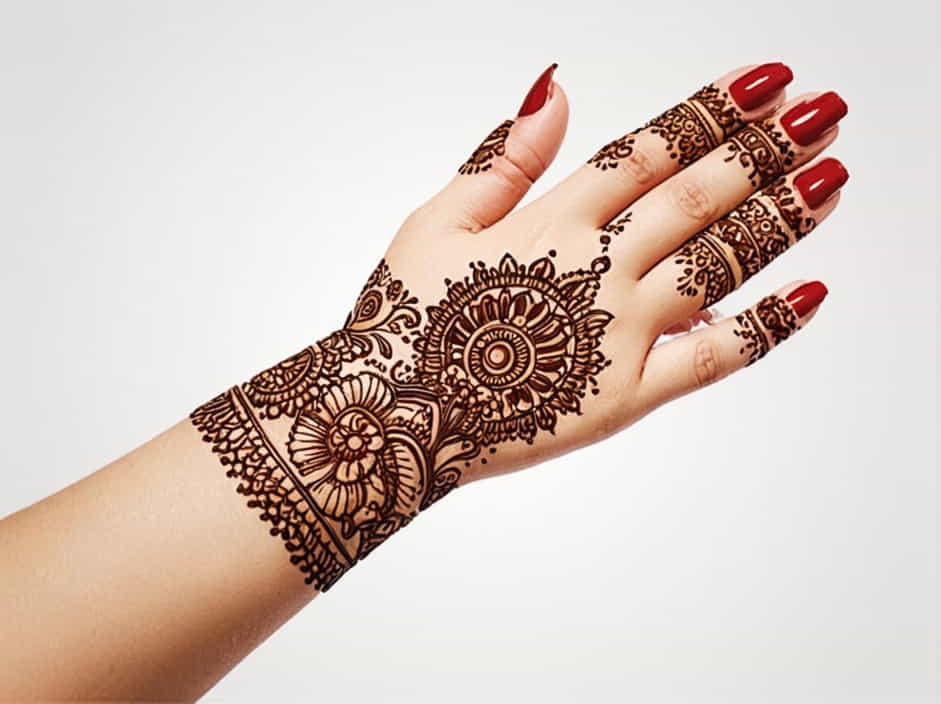Mehndi, also known as henna art, is an essential part of bridal beauty traditions, especially in South Asian, Middle Eastern, and North African cultures. Bridal full-hand mehndi designs are intricate, elegant, and symbolize love, prosperity, and good fortune. From traditional motifs to modern fusion styles, mehndi plays a vital role in wedding celebrations.
In this guide, we will explore the latest bridal mehndi designs, their significance, and tips for long-lasting color.
The Significance of Bridal Mehndi
1. Symbolism of Mehndi in Weddings
Bridal mehndi is more than just body art; it holds deep cultural significance. It is believed to:
- Bring good luck and happiness to the bride’s new life.
- Strengthen the bond between the bride and groom.
- Represent love and prosperity in marriage.
- Act as a cooling agent, helping the bride relax before the wedding.
2. The Darker the Color, the Stronger the Love
A popular belief states that the darker the mehndi stain, the stronger the love between the couple and the better the relationship with in-laws.
Types of Bridal Full Hand Mehndi Designs
1. Traditional Indian Mehndi
Indian bridal mehndi is known for its highly detailed patterns that cover the entire hand, often extending to the arms. Key elements include:
- Peacocks – Represent beauty and grace.
- Paisley patterns – Symbolize fertility and prosperity.
- Bridal portraits – Show the bride and groom within the mehndi design.
- Lotus motifs – Signify purity and enlightenment.
2. Arabic Mehndi Design
Arabic mehndi designs are less dense and focus on bold, flowing patterns. They often feature:
- Floral patterns and vines.
- Negative space techniques for a stylish look.
- Quick application with an elegant appearance.
3. Pakistani Mehndi Design
Pakistani mehndi blends Indian and Arabic styles, creating a balanced mix of intricate and bold patterns. These designs often include:
- Geometric shapes.
- Mughal-inspired floral art.
- Delicate dots and swirls.
4. Moroccan Mehndi Design
This style is different from traditional Indian mehndi and is characterized by:
- Tribal patterns with strong geometric elements.
- Minimalistic yet bold designs.
- Symmetrical and repetitive shapes.
5. Western Fusion Mehndi
Modern brides often prefer a fusion of traditional and contemporary mehndi. This can include:
- Minimalist mehndi with a modern twist.
- Glitter mehndi or colored henna.
- Mandala-inspired patterns.
How to Choose the Perfect Bridal Mehndi Design
1. Consider Your Outfit and Jewelry
- If your bridal outfit has heavy embroidery, opt for simple yet elegant mehndi.
- If your jewelry is bold, go for a subtle design that complements it.
2. Match the Design with Your Personal Style
- Love tradition? Choose full-hand detailed Indian mehndi.
- Prefer elegance? Opt for Arabic or Moroccan designs.
- Want something unique? Try fusion or minimalist patterns.
3. Think About the Duration of the Ceremony
- For multi-day weddings, choose dense, long-lasting designs.
- For short ceremonies, go for lighter, quick-drying mehndi.
Step-by-Step Application of Bridal Mehndi
1. Preparation
- Wash hands thoroughly and apply lemon juice to remove oils.
- Ensure the skin is moisturizer-free before applying mehndi.
2. Application Process
- Start with the palm and fingers, moving towards the wrists and arms.
- Use fine-tipped cones for intricate designs.
- Let the mehndi dry for 4-6 hours for deep color.
3. Aftercare for Darker Mehndi Color
- Apply a mixture of lemon juice and sugar to darken the stain.
- Keep mehndi on for at least 8 hours before scraping it off.
- Avoid washing hands with soap immediately.
Tips to Make Mehndi Last Longer
1. Avoid Water for the First 24 Hours
Water can fade mehndi faster, so try to keep hands dry for a day.
2. Use Natural Oils
Applying coconut oil or mustard oil after removal helps protect the design.
3. Stay Warm
Heat enhances color, so keep your hands warm for a deep reddish-brown stain.
4. Choose High-Quality Henna
Always use natural henna to avoid skin reactions and achieve a rich color.
Bridal Mehndi Trends for 2024
1. Personalized Mehndi
Brides are now incorporating:
- Names or initials of the groom within the design.
- Wedding dates hidden in patterns.
- Mini-storytelling designs that depict their love story.
2. Extended Arm Mehndi
Many brides now extend mehndi designs beyond the wrists, covering the forearms and elbows for a royal look.
3. Glitter and White Henna
Some modern brides prefer temporary white henna or glitter-infused designs for a chic, elegant touch.
4. Symmetrical Mehndi Art
Perfectly balanced, mirror-image patterns on both hands are trending.
Bridal full-hand mehndi designs are a timeless tradition that adds beauty and meaning to weddings. Whether you prefer traditional Indian, Arabic, Pakistani, or modern fusion mehndi, the key is to choose a design that reflects your personality and enhances your bridal look.
With proper application, aftercare, and the right choice of patterns, your mehndi will not only look stunning on your wedding day but also create beautiful memories that last a lifetime.
